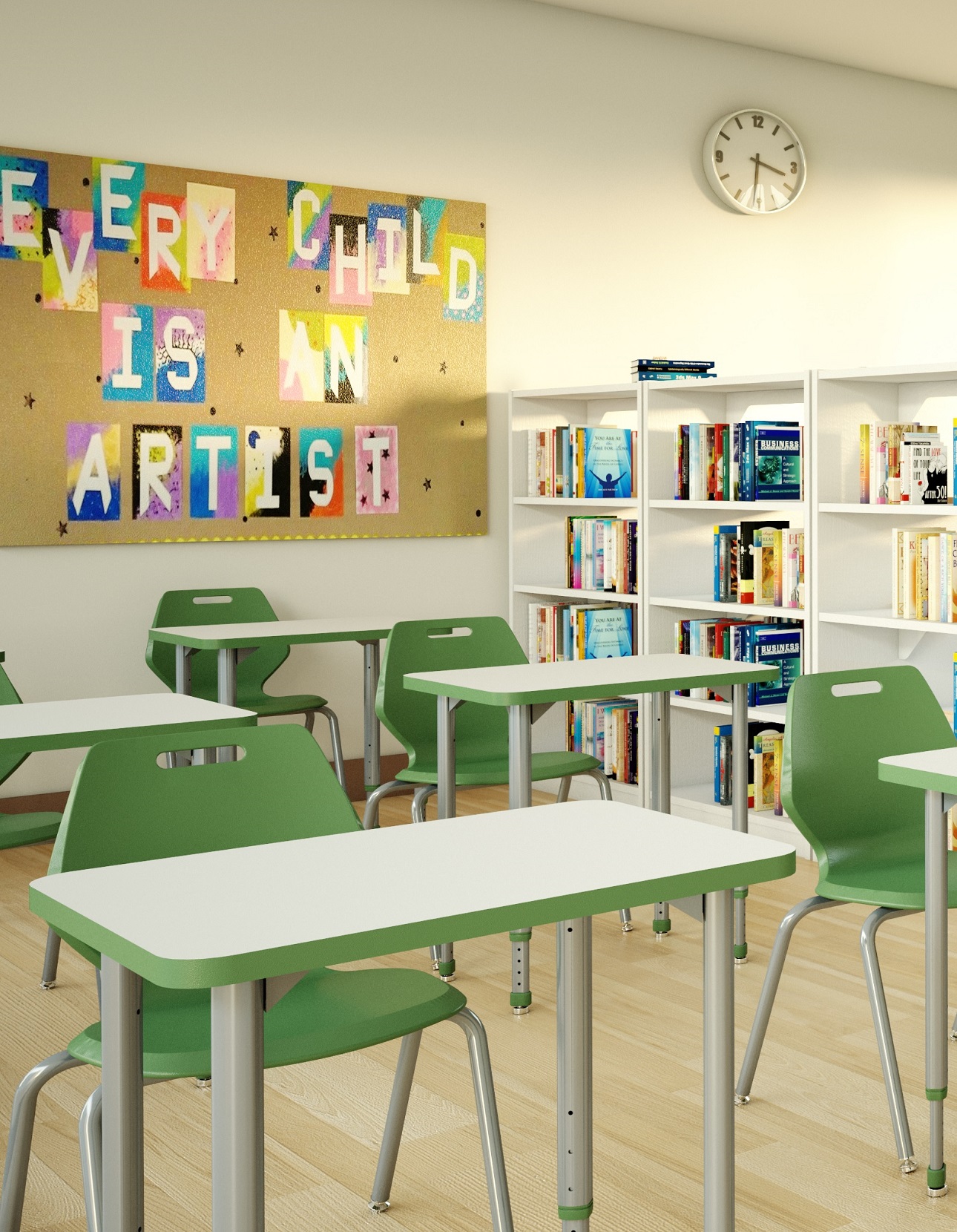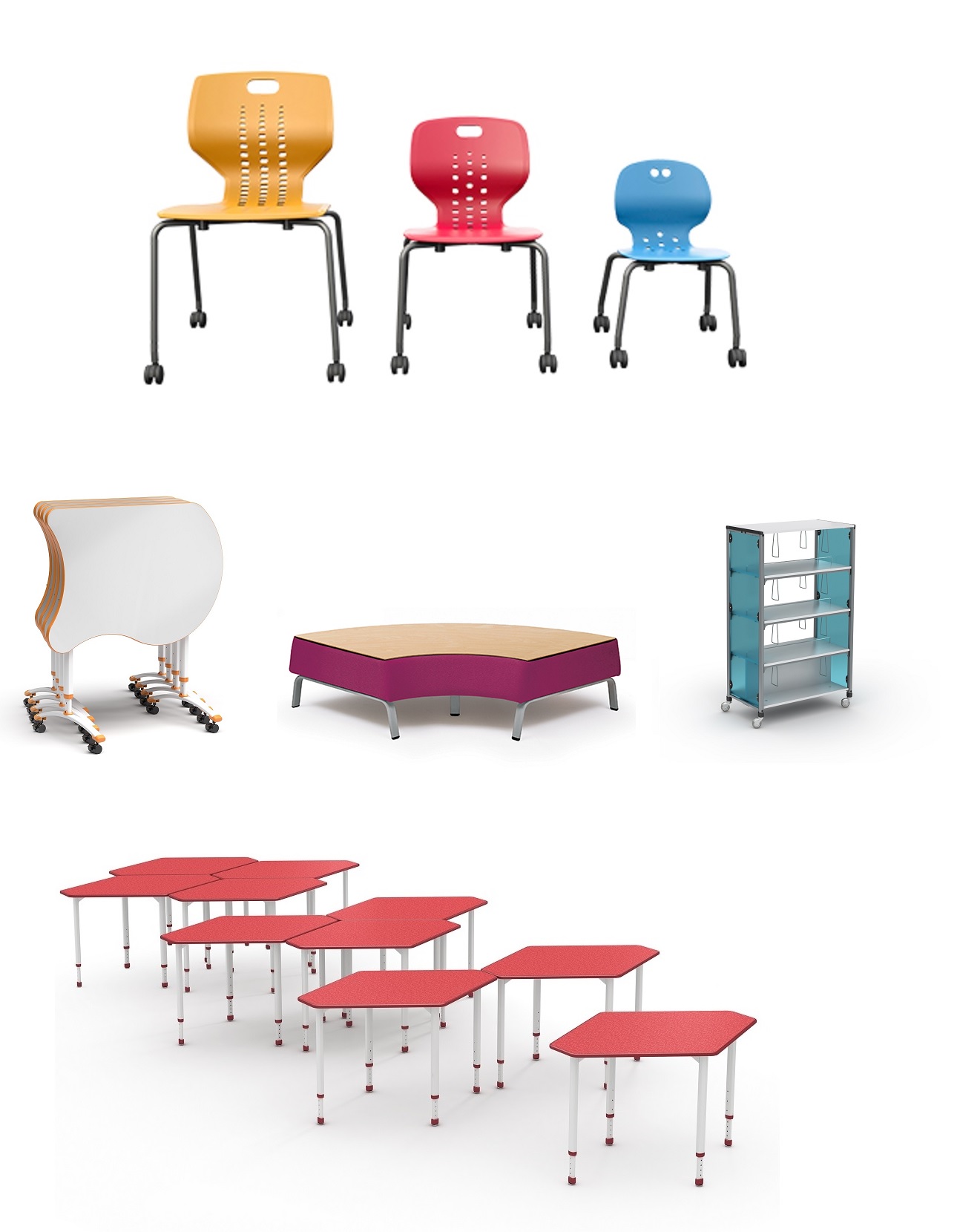SENSORY ERGONOMICS
The Importance of Sensory Ergonomics in Learning Spaces
What is Sensory Ergonomics?
If you don’t want to read an entire article on the subject of Sensory Ergonomics, here is the shortest answer that basically satisfies the question. Sensory Ergonomics explores the relationship between the design and comfort of one’s surroundings with all of the physiological sensations that occur as a result. This goes far beyond basic physical ergonomics, and dives deep into everything sensory, from color, shapes, and textures, to air quality, acoustics, and lighting. That is a non-scientific, loose simplification of the subject, but it gives a basic answer to the overall question.
In order to truly understand the meaning of “sensory ergonomics”, it’s probably best to break down the term into its 2 individual parts. Sensory – Relating to sensation or the physical senses; transmitted or perceived by the senses. Ergonomics – Relating to or designed for efficiency and comfort in the working environment. Put that together, and you get the relationship between the design and comfort of your environment, with the sensations you experience as a result. Your physical, mental, emotional, spiritual well-being is directly affected by multiple parts of the environment surrounding you.
Look around right now. Are you in a well-lit room with inviting colors, artwork on the walls, comfortable furniture to sit on, and fresh air flowing through open windows? Or, are you in a dank & dark stuffy space where you have to struggle to get into a comfortable position, and all you have to look at are four dirty walls? You may not notice it right away, but the physical environment you inhabit, plays a huge role in how you feel. Take notice of this throughout the day, and you’ll probably be surprised to find the drastic differences between a place that you consider “comfortable”, and a place that you inexplicably don’t like.
Sensory Ergonomics sets out to study these intricate relationships in order to make subtle positive differences in all aspects of the living world. Whether it’s at home, in the office, at school, or in a coffee shop, you should feel – physically, mentally, emotionally, spiritually – right. When you want to feel at ease, your surroundings should be peaceful and serene. When you want to feel energized and full of life, your environment should be invigorating and bright!
Sensory Ergonomics in Learning Spaces
If you are like the majority of people in the developed world, you spend a great deal of time indoors. These are spaces that have been designed, developed, and built by human beings. In many cases, sensory ergonomics was either an afterthought, or never thought of at all, and the results are evident. Students spend several hours of every weekday in classrooms, and unfortunately, many schools fall into the category of sensory ergonomics not being a part of the master plan. There are many reasons for this – and some of them unavoidable – but more often than not, it is due to lack of awareness. No one sets out to design a classroom that is uncomfortable and depressing, but some of the reasons they end up that way is based on innocent ignorance as opposed to deliberate intention. Many schools do not have the funding to build beautiful new facilities and hire design teams to outfit every area with the very best interior elements and resources. Other schools do have the money and spend significant sums of it making the schools look awesome but fail to make it functional on a holistic level. In both cases, there are wonderful opportunities to start the process & make subtle changes that will have a hugely positive impact. Once these practices are put into place, the overall vision will change, and it will become a natural part of progress.
Think of just about any room you’ve ever entered in your life, and you’ll notice that there is typically a lot of furniture. Classrooms are certainly no exception, and because of that, furnishings play a heavy role in the sensory ergonomics of learning spaces. Most people associate furniture with physical comfort, and that is absolutely true. No one wants to sit in an uncomfortable chair all day or work at a wobbly desk that is too tall or small. That being said, the role of furniture goes far beyond the physical in ways you may have never considered and affects the senses on several different levels. The colors, shapes, sizes, and textures of furnishings hit humans at a subconscious level – a sensory level – that cannot be understated. There are plenty of studies which show how color affects mood, concentration levels, anxiety levels, etc. In classrooms, furniture takes up so much space that the overall color palette may be generated by the tables, desks, and chairs. It may not be in the budget for a school to buy all new furnishings, but just some basic swaps and adjustments have the ability to cause a positive shift.
Classrooms typically have 4 flat walls which generally do not make the most interesting shapes or designs. Again, the objects in a room that take up the most space and make for the most varieties of shapes are – you guessed it – the furnishings. Why do we typically see a rectangle desk as normal & utilitarian, but a curvy desk with some new angles as whimsical & fun? That is right at the heart of sensory ergonomics. The shape of a table can literally send a different message to your brain that can lift your mood. Again, many schools can’t buy a bunch of fun new shaped desks, but even squares and rectangles can be arranged in interesting configurations that can stimulate the imagination. Same goes for textures & touch points. If every seating area in the classroom is hard, flat, and smooth, it sends a message to the brain that things are going to be uncomfortable for the foreseeable future. If there is any way to throw a couple soft or upholstered seating options into the mix, the results can be dramatic. It doesn’t need to be anything fancy or expensive – just a little variety works wonders on physical and mental comfort.
This barely scratches the surface in terms of classroom sensory ergonomics, but it is a starting point, and one that should be accessible for anyone – educators, designers, or furniture pros. Some of the other extremely important aspects pertain to lighting, air quality, and acoustics. These are all places where a little work can go a long way and it doesn’t require a construction bond. Is the classroom too dark or too light? A couple of strategically placed lamps or different types of light bulbs can help do the trick. Better yet, if there’s any opportunity to bring in natural light, make it happen. Same goes for air quality. There are a lot of very old buildings in the US that serve as schools, so this one can be a challenge. If windows are at a minimum and the AC unit was last serviced in the 70’s, even a small oscillating fan can help. If holding any part of the class outdoors is an option, that has the potential to make a world of a difference for the students and the teacher. These may all seem like common sense, but unless there is a focus placed on the importance of all of these combined, it will never be a priority.
The more you take notice of what’s out there in this field of study, the more you’ll see it in your everyday life. Sensory Ergonomics is on a quest to bring the physical, built environment into harmony with innate human sensations, and there is no better place to start than in education spaces.
IDEA GALLERY
Take a look at some of our environments that include concepts from Sensory Ergonomics
FURNITURE IMAGE GALLERY
Access all of our product images & easily save them to your computer.
GET A QUOTE
Ready to get a quote for your project? Fill out our quick form and we'll get back to you with a price.

